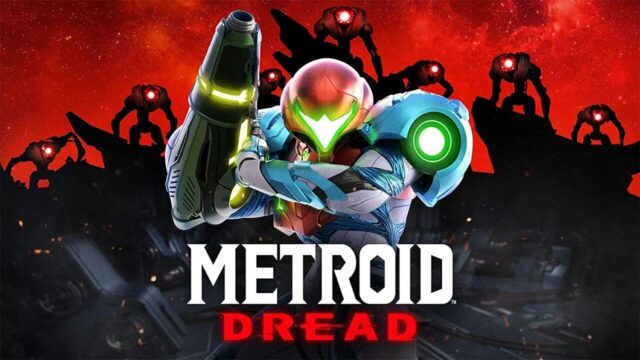Metroid Dread Review (Switch): Knee Deep in the Dread
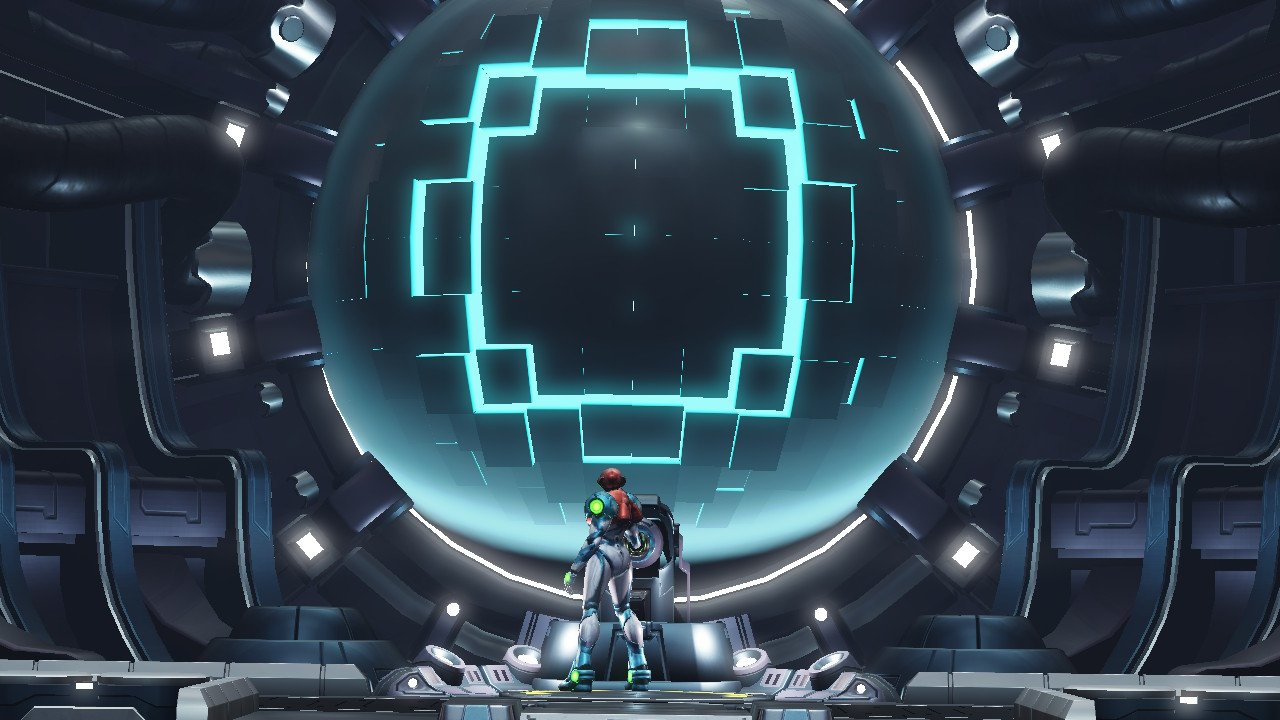
Last Updated on: 26th November 2021, 08:38 am
Metroid Dread has been in the making for many years by now; Nintendo’s fabled space action series took an extended break after the remake of Samus Returns was released on 3DS. Since then, Metroid fans have been left in the dark for ages while they waited for any kind of announcement of a new game. Despite being a popular franchise, Metroid had been put on the back burner while other heavy hitters like Mario and Zelda hogged the stage for the longest time.
Then Metroid Dread was announced and the fandom exploded in excitement, tearing off their pants collectively as they looked for their wallet. Now that the game has been in our hands for well over a month, how good is it? Does Samus truly return this time? Or did she trip on the way up the stairs to our homes?
Dripping with dread
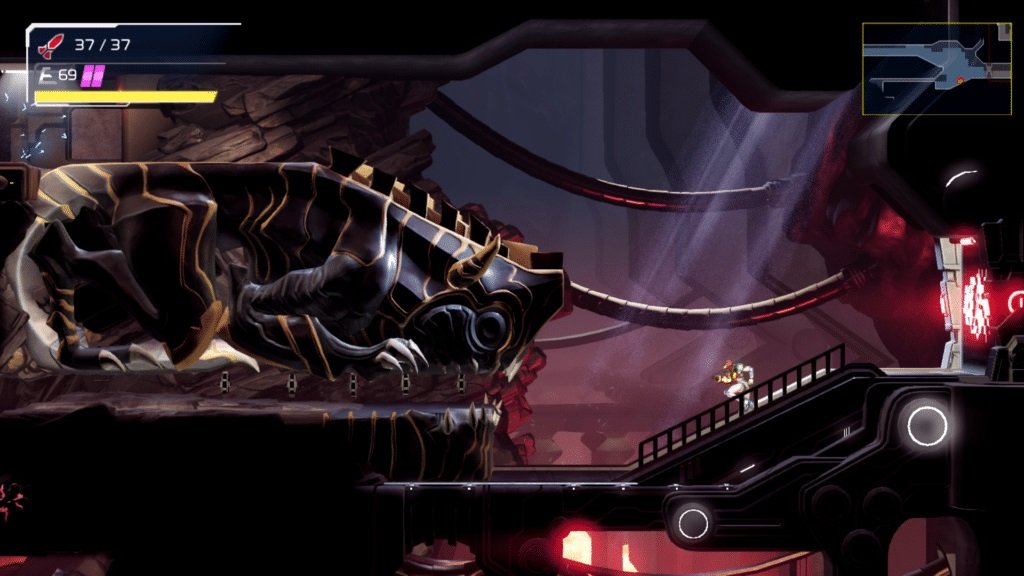
Despite being the newest, truest sequel the series has gotten in a while, Metroid Dread‘s aesthetics are absolutely confident and update the series just enough to be fresh. If you’ve been on the internet (*cough* Twitter *cough*) during the lead-up to Dread’s release, you’d see plenty of voices crying about how the game looks bad and is an embarrassment for not looking as good as other AAA games. Firstly, if you’re one of those people reading this review, how are you? Did you know that the aesthetic of a game is really important to any game looking good? You can have the fanciest engine on the planet but if your game has no artistic soul in any of its world and character design, you may as well send out game discs that show a blank white screen when you boot the game.
Secondly, Metroid Dread is a really damn good-looking game for the Switch; it isn’t the most technically impressive game, for sure, but to say that it’s ugly or just plain bad because it doesn’t have The Last of Us Part II-tier graphics is, simply, wrong. Environments in the game are well designed and distinct from one another and are all wonderfully tied together by the strong sci-fi design that Metroid is known for. Sure there’s a bit of familiarity with the types of zones that are available to explore (a hot place, a cold one, one that’s underwater, etc.) but they all have something new added to them that shakes up the usual formula for Metroid: the “dread” that you’ve been hearing so much about.
READ MORE: No More Heroes III Review (Switch): Otaku-Assassin-a-Go-Go
Unlike other entries, Dread‘s environments feel much more hostile and uninviting than ever before; every new environment you enter is dark and moody, with lighting that creates degrees of unease. It makes for an experience that turns the tables and makes you feel hunted the entire time. Hunted by what you may ask? Well, what would a good environment be without a terrifying villain to contend with? That’s where the E.M.M.I come in.
The E.M.M.I are fairly imposing antagonists that give some horror games a run for their money; they’re fast, relentless, and worst of all, are immune to your conventional weaponry. Their design is simple but elegant: tall, lanky, agile, and available in various bright colors. They elicit the sensation of a cold, calculated killer very well and are always a form of anxiety that feels well designed for most of the game. They feel like a natural evolution of the technology presented in the other Metroid games and as such are welcome as fairly memorable antagonists.
Do or die and you can still try
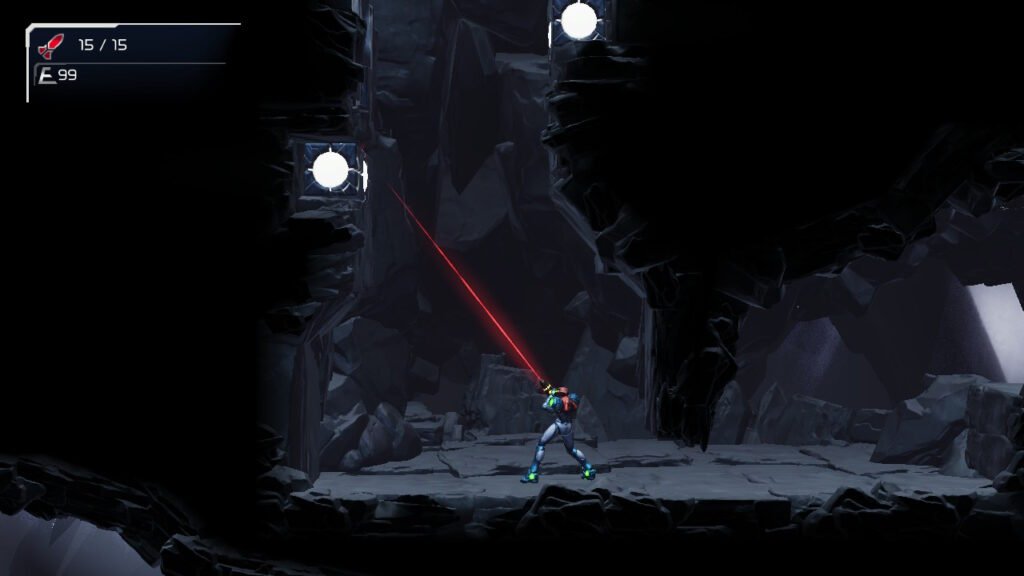
The dread part of the game’s title is the core of all its gameplay and it definitely shakes up the traditional Metroid formula by changing one basic thing: your survivability. Your “survivability” in the other games is pretty high, as it was pretty difficult to take too much damage outside of the occasional tough boss fight. Basic enemies weren’t really a big issue unless you were in a room that supplemented them with traps like lava and such. As a result, the gameplay became pretty uneventful by the time you hit the endgame; however, this isn’t the case in Metroid Dread.
The game starts simply enough like any other Metroid game, where Samus loses all her weapons and abilities because of some inciting incident and as such needs to arm herself over the course of the game. The structure of the game is what you’ve seen before (if you’ve played a Metroid game before at least), where you get more abilities and weapons that allow you to explore new locations that you couldn’t before. You fight bosses, get new suits, new weapons, and progress through the various new locations on the planet ZDR. It’s all familiar to many people, with again, your survivability being changed drastically.
READ MORE: The Legend of Heroes: Hajimari no Kiseki Review (PC)
What makes this particular entry in the series so different is its emphasis on a general higher difficulty and it really shines through even at the very beginning of the game. Enemies and bosses are all capable of taking you out with ease, so expect to die a lot before seeing the credits roll. Everything hurts in this game, with even the basic grunts you run into at the beginning of the game being able to dish out high damage if kept unchecked. It’s easy to get cocky and dismiss the regular enemies as your usual fodder and it’s that line of thinking that’ll send you to the game over screen real quick.
You’re never completely safe from death even when you’ve obtained more upgrades and you’re never able to completely comfortably settle into any reliable strategy for taking out enemies. Make no mistake, you’re given everything you need to succeed, but the tools are only as good as you are. Getting those tools is no different than other Metroid games, but this shift in difficulty makes obtaining them feel much more exhilarating than before. If you’re not the biggest fan of high-difficulty gameplay, then you might be cold on this change for the series; personally, the gameplay feels fresher for it but there were a few moments where the difficulty felt too high.
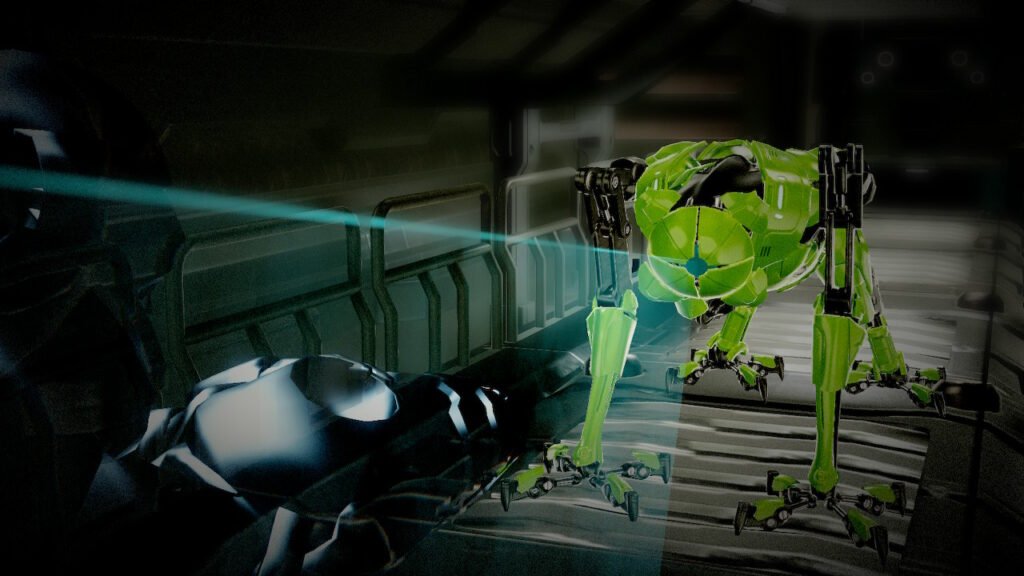
This extends to the aforementioned antagonists of the game, the E.M.M.I, who are definitely the most unique change to the Metroid formula. See, the way these guys work is that they’re impervious to all of your standard weaponry, so your only option is to run away whenever you’re locked in an area with them, otherwise, you’ll be grabbed and insta-killed by them. There’s a parry that has been brought over from the Samus Returns 3DS remake, where you press a button to perform a melee attack that can parry specific attacks that are telegraphed by a flash of light. For every other enemy, the parries are easy to learn, for the E.M.M.I, however, your window to parry their killing blow is fast and randomized, so no one capture feels exactly the same.
You’ll know when you’re about to deal with an E.M.M.I because their rooms are designated with these really slick doors that look more like a digital membrane breathing instead of just a door. The various E.M.M.I rooms are designed to facilitate high-speed chases that you’ll inevitably get into while you maneuver around these robotic monstrosities. You’ll be sliding, shooting, and jumping your way through these rooms and they’re fairly thrilling early on; however, by the time you reach the last E.M.M.I section, the schtick feels like its overstayed its welcome. Every E.M.M.I fight ends the same way: you find a specific room with a mini-boss that gives you a super-powered charge beam that can kill the E.M.M.I.
READ MORE: Grand Theft Auto The Trilogy – Definitive Edition review (PC) – A disappointing cash grab
Each E.M.M.I has its own unique trait, like increased speed or the ability to stun you, but other than those differences, you’re still taking them out the same way. The design of these particular encounters exposes a different issue that Metroid Dread unfortunately has, and that’s the control scheme itself. You’ll obtain lots of weapons and abilities in this game, so you’ll have plenty of options to deal with every challenge the game throws at you, but all that power comes with the overwhelming amount of button combinations you’ll have to memorize.
Individually, each of these inputs are pretty simple, but when you’re in an intense segment, like the E.M.M.I encounters, it can be overwhelming to combine all of them together. Sliding, shooting, jumping, and charging energy blasts can all feel great to do but can take plenty of time to come to grips with. It’s a shame that there isn’t any sort of customization option for controls, as anyone with some sort of physical impairment will have a hard time dealing with these controls. Hopefully the next Metroid entry will do better and allow for some more customization, because these abilities and weapons are absolutely fun to use.
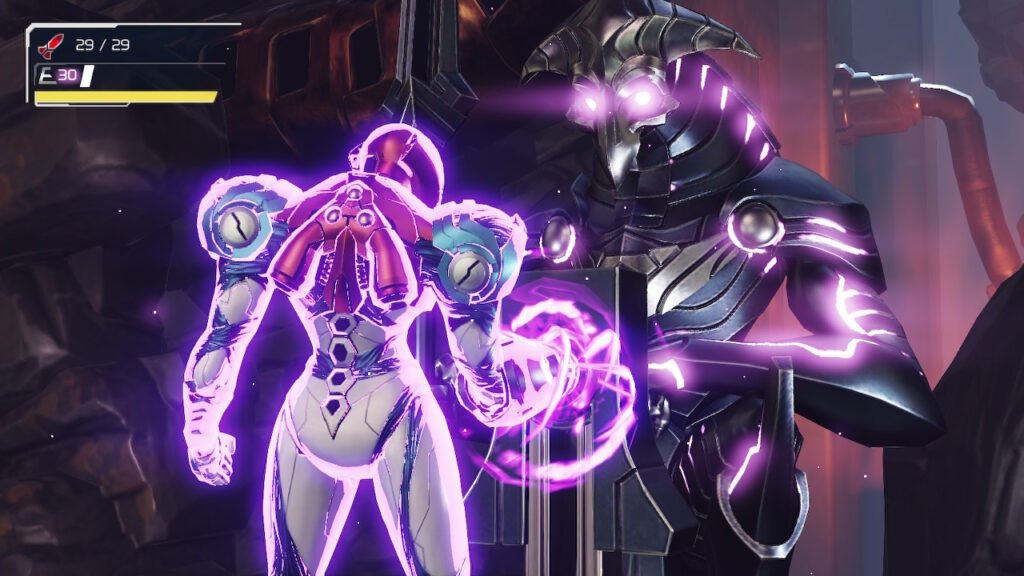
Controlling Samus feels great and firing your beams or missiles have a nice, satisfying punch to them, while upgrading them is as great as ever. You’ll find yourself utilizing almost every single upgrade in one form or another, as enemies maintain their danger long after you’ve obtained every single upgrade. Movement is fast and requires some quick thinking, as you’ll have to use every single form of movement to escape the E.M.M.I and find the various hidden collectables strewn about ZDR. If you’re big on collectables in games, you’ll appreciate the various quality of life improvements Metroid Dread includes for the most stringent of completionists.
The game will clearly mark where you should explore for hidden energy tanks, missile upgrades, and others as you hug every single wall in the game. These are some of the best hidden collectables in any game in recent memory and require some insane amounts of execution to obtain. Don’t feel bad if you have trouble finding these hidden items by the way, everyone has trouble finding thes things.
Samus returns, yet again
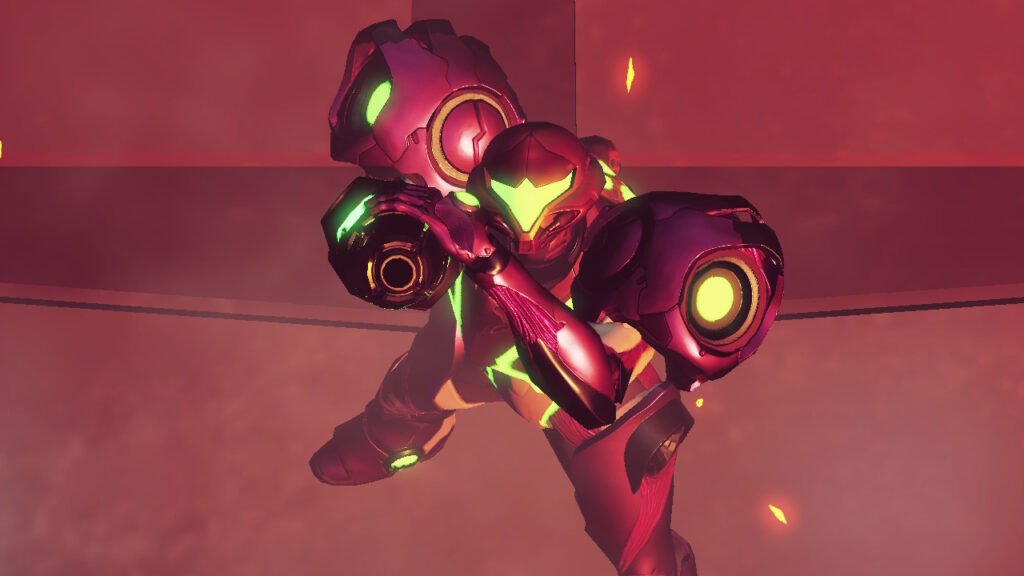
While the story in Metroid Dread is emphasized, it really isn’t that special when you break it down. However, it does a good job of expanding the Metroid lore and deepening the character of Samus a bit more than usual. As mentioned before, Dread has Samus landing on another planet to investigate the disappearance of the various E.M.M.I units that were sent down there to search for any existence of the X Parasites, creatures that were the main antagonists of Metroid Fusion. She loses her powers when encountering a mysterious Chozo warrior and is hunted by the E.M.M.I, as they were reprogrammed to eliminate her on sight.
The game does a good job of really emphasizing that Samus is in deep trouble this time around, as the mere existence of the E.M.M.I lend themselves the perfect role as seeemingly unkillable machines. Their reprogramming and the hostility of the Chozo warrior create plenty of intrigue and while the revelations aren’t anything special, they at least will keep you interested in what’s going on. If you’re into story-centric games, Metroid Dread will leave you feeling a bit cold, as it plays its story pretty straighforward and doesn’t try anything different. Metroid games haven’t had much of a focus on story, save for Other M (the game very few people like), and as such, Dread doens’t feel too different from any of the other entries.
I will say that the game does a better job of creating environments that instill a degree of anxiety in the player as they work their way past the semi-invincible creatures that relenthlessly hunt them. Contrasted with this anxiety are some pretty cool cutscenes that cement Samus’ legacy as one of gaming’s most badass protagonists. The action is really well directed and is good at making the cutscenes flow and transtion well into gameplay.
Dreadfully fun
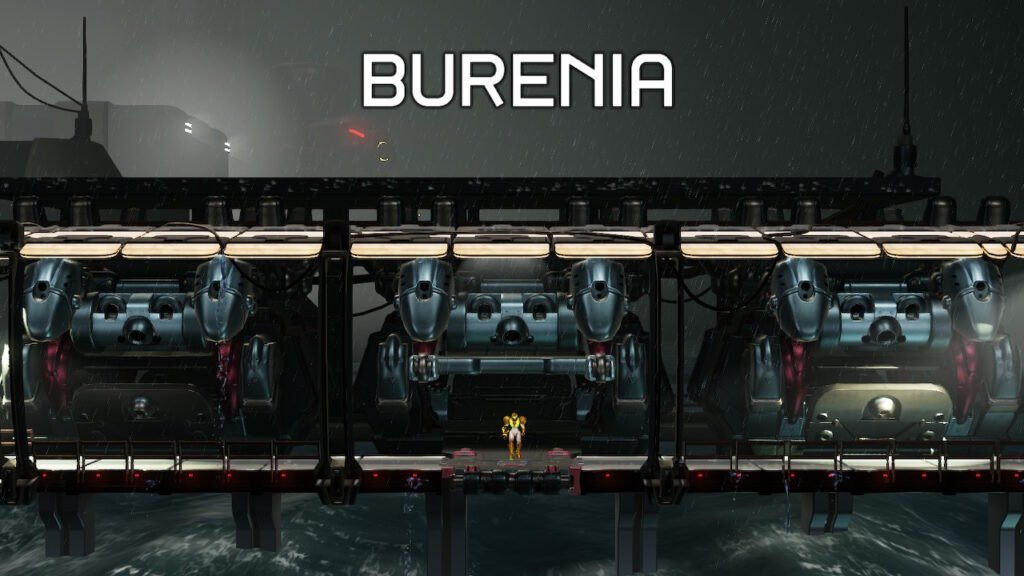
Metroid Dread is just a really good game. It’s not trying to reinvent the wheel or smash any kind of record for most units sold, its just a really solidly good game. If you’re up for something that will test your reflexes and the dexterity of your fingers, then this game will defiinitely be for you. However, if you like your games to be much more even handed with its difficulty, then consider carefully whether or not you’ll be up to trying to “git gud” for a good while. I finished the game at around the 25 hour mark but that can easily increase if you go for 100% item and map completion.
Without a doubt, you’ll get your money’s worth with Dread, but if you’ve been cold on the Metroid series before, don’t expect this one to change your mind. This is a game for Metroid fans and as a result, it adheres closely to that formula; but that formula is still really good and is well worth trying out if you’ve never played a Metroid before. Having this game be your introduction to the world of Metroid wouldn’t be bad and would definitely give you a leg up on the other games in terms of skill.
If you’ve needed a reason to break out your Switch again, consider this one. Don’t dread your indecision and just hop in. Full stop.

